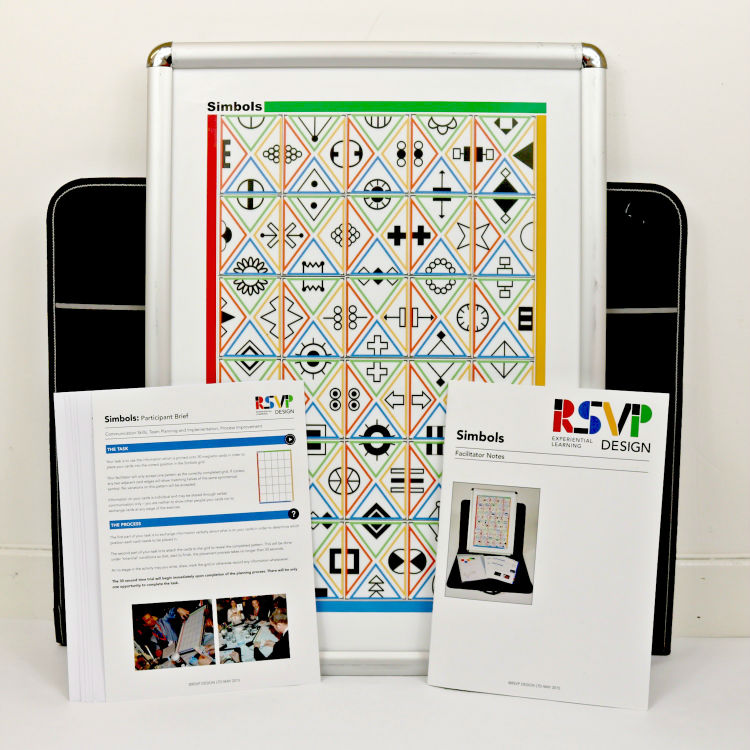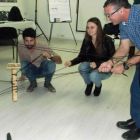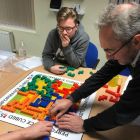Many projects and teams work across different departments, sites and even different countries. Throughout this process, many teamworking challenges can arise and barriers surface that might impact on the success of the project. Just as with other initiatives, success is critical, and just because many different people are working on the project from different locations this does not necessarily mean any leniency is given regarding performance. Quite often the pressure to achieve team results is even greater due to the time and resources invested.
What kind of things can we anticipate throughout this process of delivering on a successful project when teams work interdependently? In many ways, the Bruce Tuckman theory discussed in ‘Developmental Sequence in Small Groups’ (1965) still applies. This teamworking model is more commonly known as ‘Forming, Storming, Norming and Performing’.
Specifically, the first two stages of the ‘Forming’ and ‘Storming’ in teamworking can be the most challenging. People and departments can struggle to understand the direction without sufficient clarity; they can potentially interpret the purpose according to their own preference, not always think of the ‘big picture’ approach that is required to ensure a holistic and comprehensive success. They can try to secure a certain position within the dynamic of the team, maybe even carry on just as they did before because the impact of what is required may not have yet hit home, or even see a potential team leadership opportunity to emerge and so promote personal agenda. A whole raft of challenges can occur during these phases.
As Albert Einstein once said: ‘Human beings must have action; and they will make it if they cannot find it.’
Just as the quote implies, this desire for action can work in a negative way as well as in a positive way.
Many see the Tuckman teamworking model as replicating the human response to change. In simple terms, the four stages reflect the four reactions experienced during change; the reactions of denial, emotion, questioning and finally commitment. People can at first deny a change before the reality of the situation kicks is, initiating an emotional response that follows. As people start to understand what is required to make this difference, they perceive the change to potentially impact on them ‘personally’. People may want to secure the best position for themselves, often before remembering it is the position of the result as a whole that counts. These turbulent times generally start at the beginning of a project when interdependent teams work together.
We then move into slightly calmer waters. The ‘questioning’ and ‘commitment’ phases of change are very similar in nature to Tuckman’s ‘norming’ and ‘performing’ stages. At least there is a sense by this stage that things are ‘on the home run’. Before of course the entire cycle starts again with a new project or team! On occasion, time pressure can increase just before the end of delivery. If the teams have not achieved significant milestones and the deadline looms ever closer, and much quicker than previously anticipated, stress can build and the ‘threat response’ can mean behaviours are affected once again.
The reason why we can compare teamworking to change here is because it is essentially that, a change. Interdependent teams might be required to adopt a ‘new way of working’ to perform and achieve specified objectives. Change initiates a human response. In this way because we ‘respond’, it is important to be aware of, and manage, that response.
The use of experiential learning activities in team development can help accelerate stages of the Tuckman teamworking model, and bring awareness of each of these stages to the team memebers. RSVP Design has recently introduced the LIVE A Life Less Ordinary Game to our library of activities. This is a powerful communication and team building experience in the style of a board game. The LIVE game is an informal team building and communications activity designed to encourage individuals to talk about their experiences, and express themselves, their thoughts, and feelings using the different sections and cards played throughout the activity.
Emotional Intelligence (Ei) by Daniel Goleman and later adapted by Salovey and Mayer, is a theory which seems to so aptly underpin many of our corporate and personal behaviours. It describes our human condition. Simply put, it can summarise why people act like people. It is a theory worth considering here too, to refer to for some guidance in teamworking.
Just as individuals can develop Emotional Intelligence, so can teams. Not only is awareness useful whilst passing through the different stages, but also Ei would help to understand and therefore manage the response of the team. How does the team react? What are the triggers for the team? When does the team feel unsure? What is the personality of the team? How do they respond to the early stages of the team dynamics? How do they communicate with other teams? Do cross functional conversations become strained because of a perceived threat to reputation?
Examination of these types of questions will provide information that can determine what needs to be done.
The ‘keep calm and carry on’ approach is certainly relevant but often teams and individuals carry on without necessarily keeping calm. It is surprising how many people do not tune in to how they are feeling or ignore signs that point to a sense of discomfort. Technically many things can usually be dealt with. It is the behavioural issues that prove most challenging. Even with a technical difficulty it is usually the emotional response that determines the speed in which the technical issue can be resolved.
Once we have analysed how individuals and teams respond to the challenges brought about by large projects and interdependent team working, we can identify the best way to respond. We can consider how we need to communicate, how we can genuinely and wholeheartedly listen in order to build those all important relationships and naturally become ‘aware of others’ and in so doing, hopefully achieve a successful project outcome, together.
Two RSVP Design activities worth considering to allow sub-teams to work together interdependently and rehearse some of the teamworking challenges described above, include Simbols and Webmaster®.
Click an image below for more details of either of these team development activities.


In the blog I wrote last month I tried to address some of the assumptions about experiential learning that seem to be getting in the way of people including elements of this approach in their programming. It seems that the most pervasive of these assumptions is about the physical spaces that are needed to deliver effective experiential content. To ... Read more...
 My friend and colleague Graham Cook is heading to Florida later this month where he'll be delivering a session at Training Magazine's 'Training 2024' conference and exhibition. His session is titled 'How to Design Behavioral Change Using Experiential Learning Activities'. I'm not going to be alongside him for this conference but that doesn't mean I...
Read more...
My friend and colleague Graham Cook is heading to Florida later this month where he'll be delivering a session at Training Magazine's 'Training 2024' conference and exhibition. His session is titled 'How to Design Behavioral Change Using Experiential Learning Activities'. I'm not going to be alongside him for this conference but that doesn't mean I...
Read more...
 Most good trainers and facilitators I meet tend to have a strongly developed intuition about the needs of others. It doesn't take long for them to get to understand what will help a student to learn, and how learning material needs to be presented to make it easier for that learning to take place. As these trainers and facilitators become more ...
Read more...
Most good trainers and facilitators I meet tend to have a strongly developed intuition about the needs of others. It doesn't take long for them to get to understand what will help a student to learn, and how learning material needs to be presented to make it easier for that learning to take place. As these trainers and facilitators become more ...
Read more...
 It’s a question I often read around this time of year, and it inevitably provokes responses from extremes of opinion. There are those who go full-on consumerist and suggest expensive cars, jewellery, homes etc, ideas that are balanced by those who reject these ideas and suggest good health, happiness, close family etc.
So, as I&rsquo...
Read more...
It’s a question I often read around this time of year, and it inevitably provokes responses from extremes of opinion. There are those who go full-on consumerist and suggest expensive cars, jewellery, homes etc, ideas that are balanced by those who reject these ideas and suggest good health, happiness, close family etc.
So, as I&rsquo...
Read more...
 There were some interesting responses to last month’s blog which considered how to handle a session where your group are unsuccessful at completing the experiential task you have set them. For some people this was accepted as very sound advice, and it seems to have taken away some of the ‘fear of failure’ that was out there. ...
Read more...
There were some interesting responses to last month’s blog which considered how to handle a session where your group are unsuccessful at completing the experiential task you have set them. For some people this was accepted as very sound advice, and it seems to have taken away some of the ‘fear of failure’ that was out there. ...
Read more...




